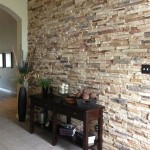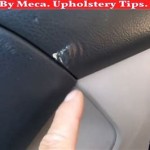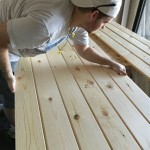Here's an article addressing the ability to purchase interior doors without frames:
Can You Buy An Interior Door Without the Frame?
The process of replacing an interior door within a home or other building often raises questions about the scope of the replacement needed. While some projects necessitate replacing the entire door unit – including the frame, hinges, and hardware – other scenarios might only require the replacement of the door slab itself. Understanding the availability and considerations of purchasing an interior door without the frame is crucial for efficient and cost-effective home improvement.
Purchasing an interior door without the frame, often referred to as a door slab only, is indeed possible. This option is particularly advantageous in situations where the existing door frame is structurally sound, square, and dimensionally compatible with the new door. Avoiding the frame replacement can save time, money, and effort associated with demolition and installation of a complete door unit.
However, it's important to approach this type of purchase with careful assessment of the existing frame and the new door's specifications. Discrepancies in size, thickness, or hinge placement can lead to significant installation challenges and compromise the functionality of the new door. The following points detail key considerations and specific aspects to evaluate when considering buying an interior door without the frame.
Assessing the Existing Door Frame
Before deciding to purchase a door slab only, a thorough inspection of the existing door frame is absolutely necessary. This assessment should cover several critical areas, starting with structural integrity. The frame should be free from rot, warping, or any significant damage that could compromise its ability to securely hold the new door. Examine the jambs (the vertical sides of the frame) and the head (the top horizontal piece) for signs of decay or instability. If any of these issues are present, replacing the entire door unit, including the frame, is the recommended course of action.
Next, evaluate the squareness of the frame. An out-of-square frame will cause the door to bind or not close properly, regardless of how well the door slab fits initially. Using a carpenter's square, check the corners of the frame to ensure they are at a perfect 90-degree angle. Even a slight deviation can cause problems. If the frame is significantly out of square, attempting to install a new door slab within it may prove futile without substantial modifications to the frame itself. These modifications may include shimming, planing, or even partial reconstruction, potentially negating the benefits of not replacing the entire frame.
Finally, confirm the dimensions of the existing frame opening. Measure the height and width of the opening at multiple points to account for any variations. These measurements should align closely with the specifications of the door slab you intend to purchase. A slight difference in dimensions can sometimes be accommodated with shims or planing, but a significant discrepancy will require either modifying the door slab or, again, reconsidering replacing the entire door unit.
Determining Compatibility with the New Door Slab
Once the existing door frame has been thoroughly assessed and deemed suitable, the next step is to ensure compatibility between the frame and the new door slab. This involves careful comparison of dimensions, hinge placement, and hardware considerations. The thickness of the new door slab should match the existing frame's rabbet (the recess into which the door sits). If the door is too thick, it will bind against the stop molding; if it's too thin, it may not close securely. Minor differences can be addressed with shims, but significant discrepancies should be avoided.
Hinge placement is another critical factor. The hinges on the new door slab must align perfectly with the hinge mortises (recesses) on the existing frame. If they do not, new mortises will need to be created on either the door or the frame. Creating new mortises requires precise woodworking skills and specialized tools to ensure proper alignment and functionality. Misaligned hinges can cause the door to sag, bind, or not close properly. While it is possible to adjust hinge positions, it adds complexity and potential for error to the project.
Consider the hardware requirements as well. The latch bore (the hole for the doorknob or lever) and the strike plate mortise on the frame must align correctly. If they do not, further modifications will be necessary. Furthermore, ensure that the backset (the distance from the edge of the door to the center of the latch bore) of the new hardware matches the existing bore on the door. If the backsets differ, you may need to drill a new bore hole, which can be challenging and potentially damage the door.
Finally, consider the swing direction of the door. Left-hand and right-hand doors require different hinge placements for proper operation. Ensure that the new door slab is configured for the correct swing direction to match the existing frame. Incorrect swing direction will necessitate reversing the hinges, which involves filling the existing mortises and creating new ones on the opposite side of the door and frame. This is a complex undertaking that should only be attempted by experienced individuals.
Sources for Purchasing Door Slabs
Door slabs can be purchased from a variety of sources, including home improvement stores, lumberyards, and online retailers. Home improvement stores typically offer a wide selection of standard-sized door slabs in various materials and styles, making them a convenient option for many homeowners. Lumberyards, on the other hand, may offer a more specialized selection, including custom-sized doors and higher-quality materials. Online retailers provide a vast array of options, but it's essential to carefully verify the seller's reputation and return policies before making a purchase.
When purchasing a door slab, be sure to specify the exact dimensions and any desired features, such as the type of core (hollow core or solid core), the finish (primed or pre-finished), and the presence of any pre-drilled hardware holes. Providing accurate information will help ensure that you receive the correct door slab for your needs. It is also advisable to take detailed photographs of the existing door and frame, including close-ups of the hinges and hardware, to show to the supplier. This can help them understand your requirements and provide accurate recommendations.
In addition to the door slab itself, you may also need to purchase hinges, a doorknob or lever, a strike plate, and screws. Ensure that these components are compatible with the door and frame. If you are unsure about which hardware to choose, consult with a salesperson at the store or lumberyard. They can provide valuable guidance and help you select the right components for your project. Remember to factor in the cost of these additional materials when budgeting for your door replacement project.
It's essential to consider the material of the door slab. Common options include wood (solid or engineered), fiberglass, and steel. Wood doors offer classic aesthetics and can be easily customized, but they may require more maintenance and are susceptible to warping or rot. Fiberglass doors are durable and weather-resistant, making them a good choice for exterior applications but are also increasingly popular indoors. Steel doors are strong and secure but may not be as aesthetically pleasing as wood or fiberglass. The choice of material will depend on your budget, aesthetic preferences, and functional requirements.
Before finalizing your purchase, carefully inspect the door slab for any defects, such as scratches, dents, or warping. It's always better to identify any problems before bringing the door home, as it may be difficult to return or exchange it later. Also, ask about the warranty policy. A reputable supplier will offer a warranty against manufacturing defects, providing peace of mind and protecting your investment. Remember that the installation process, even for a slab only, is crucial. Improper installation can void a warranty and diminish the door's functionality.
Ultimately, deciding whether to buy an interior door with or without the frame depends on several factors, including the condition of the existing frame, the compatibility of the new door slab, and your skills and experience with carpentry. A careful assessment of these factors will help you make an informed decision and ensure a successful door replacement project.

How To Install An Interior Door Without A Frame

Frameless Interior Doors At Doordesignlab

Frameless Interior Doors At Doordesignlab

Replacing A Door And Keeping The Frame Brennan Dfw

How To Install An Interior Door Without A Frame

Can You Just Replace A Door Without Replacing The Frame Ideal Window Solutions

How To Install An Interior Door A Erfly House

How To Hang An Interior Door Tips And Guidelines Howstuffworks

Invisible Interior Doors With Built In Frames Anyway Arco
How To Know If I Need A Prehung Door Quora
Related Posts








